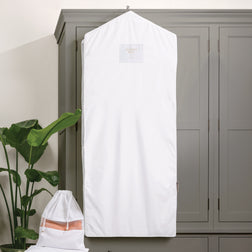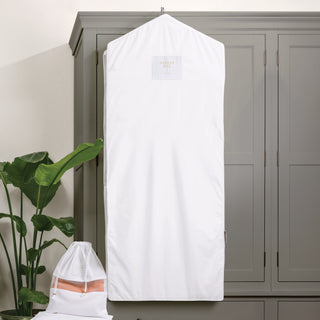What are the best methods of storing cashmere sweaters? Once you understand how to store cashmere sweaters and other cashmere garments properly, each of these steps will transition seamlessly into your normal laundering routines.
If you were asked to name the most delicate fabrics in your closet, materials like silk, cashmere, lace, and velvet would likely come to mind.
And common sense tells us that any of those fabrics need to be washed differently than other clothes because of their fragility. But have you considered that they may need to be stored differently as well?
Delicate fabrics, especially luxury items like cashmere, require special care to maintain the luscious softness and reliable durability of their fine, natural fibers.
So, in this post, we’ll explore everything you need to know about properly storing your favorite cashmere pieces.
What is Cashmere?
Cashmere is made of goat’s hair, but not just any goat hair. In the Kashmir Valley, between the borders of India and Pakistan, lives a breed of goat prized for its soft undercoat and sturdy guard hairs. When gathered, cleansed, and spun into yarn for weaving textiles, these goat hairs create the world’s most luxurious wool: cashmere.
Historical Context
Local traditions vary on how these goats were brought to the Kashmir Valley and who first thought to gather their supple undercoats for making wool.
However, it’s generally accepted that cashmere wool was manufactured in the region for thousands of years before 18th-century trade brought herds and more efficient manufacturing practices to the area. Now, the cashmere or pashmina breed of goat can be found all over the world.
Purists and strict cashmere enthusiasts might insist that wool gathered from goats not living in the Kashmir Valley is substandard, even if they are the same breed. Their philosophy is that the Kashmir Valley climate impacts the strength and warmth of the fibers in the final product.
Modern Trends
Centuries later, cashmere still reigns supreme compared to other expensive, high-class textiles. For many, the breathable durability of natural fiber materials like cashmere is superior to synthetic blends. In the case of cashmere, few wools can compete with its combination of warmth and light weight.
Why Does Proper Storage Matter for Cashmere?
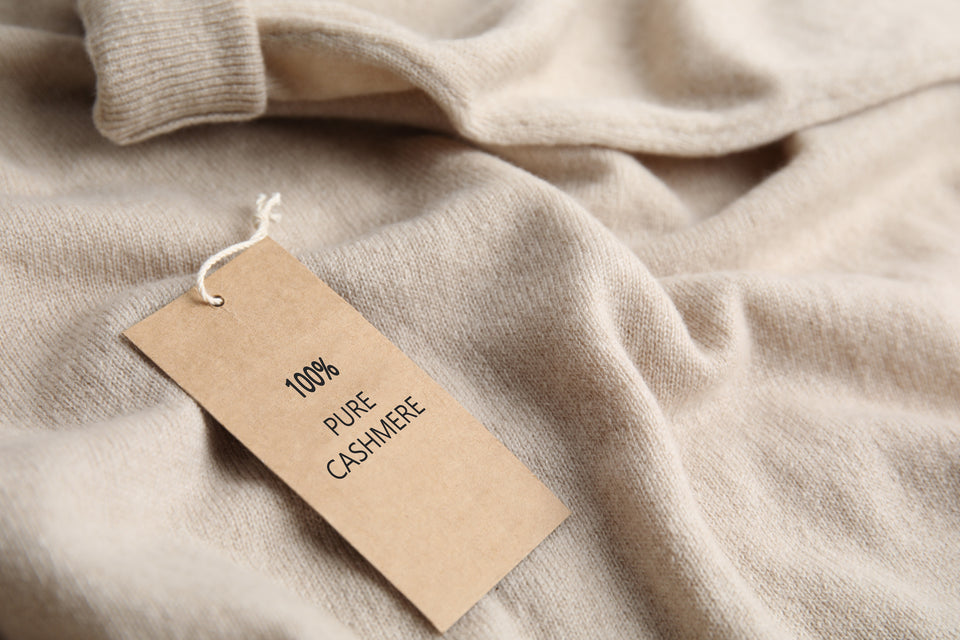
It is a good practice to take care of your belongings no matter their worth, but there are more reasons to store cashmere correctly than just behaving responsibly.
Longer Lifespan
When you store cashmere properly, its natural fibers will be kept soft and vibrant for years, even decades.
It is entirely possible to expect a lifetime of use from any quality piece of cashmere you buy provided that you maintain excellent storage practices through those years.
Cashmere Pest Prevention
Once infested, clothes moths can be incredibly tricky to exterminate. That’s why it’s important to be proactive and take the necessary precautions to prevent moths. Use zippered large storage bags that are made of breathable cotton.
Natural products like cedar wood blocks and lavender sachets are also great for repelling pests, but they only work when their oils are fresh, so be sure to replace or renew any that have lost their potency.
Hayden Hill garment storage bags protect your pieces from moths and preserve the beauty of your clothing. Our bags are made of organic, soft cotton with a sheer, organza side panel so you can see your pieces while keeping them protected from light and dust. Hayden Hill delivers sustainable and beautiful garment care to protect what you love.

Clean Storage Space
Closets are sometimes one of the last spaces we think about cleaning. But if left unchecked for long periods of time, there could be spots of bacteria, fungus, or mold growing. Before storing valuable items in a space, it should be cleaned thoroughly and re-cleaned at regular intervals thereafter.
The garments themselves can also be victim to damage. An important part of proper storage is making sure the items are pristinely clean prior to storing. Stains from certain natural body oils and perspiration won’t show up until the individual fibers of the garment relax and release them. Left alone, these could attract moths or weaken the bonds between the fibers and cause frays, pills, or unraveled seams.
Preparing Cashmere for Short-Term Storage
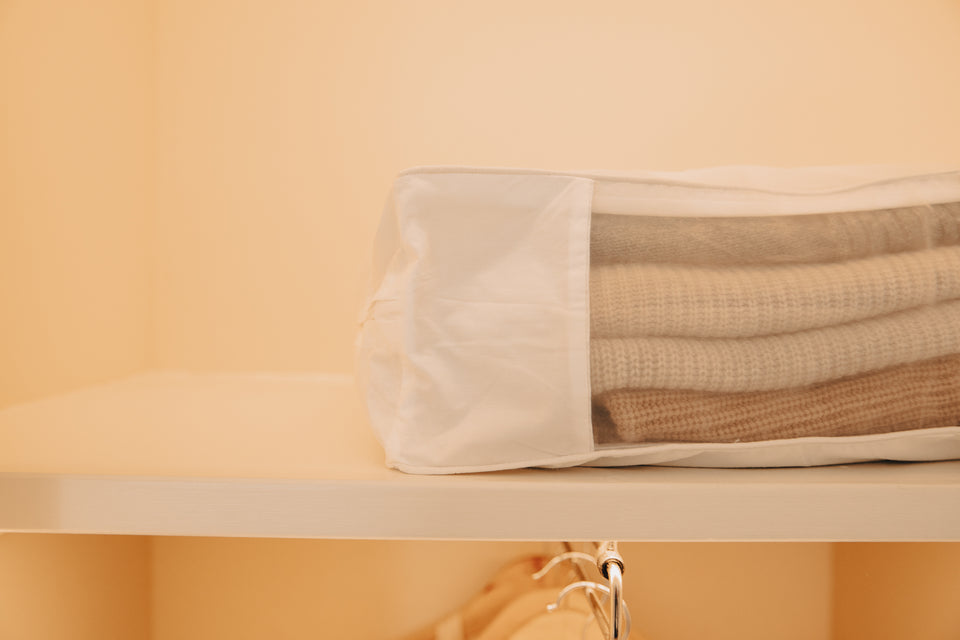
During the routine processes of washing, drying, and storing cashmere for regular wear, there are a few questions that come up often.
Should I hang or fold my cashmere?
Consider this a settled matter rather than a hotly contested debate. Folding your cashmere belongings will always, always be a better storage choice than hanging them.
Cashmere’s natural fibers are durable, but under certain conditions, they can also be quite vulnerable to damage. No matter how light cashmere wears compared to other wool textiles, its own weight causes enough tension that it can stretch the bonds between each strand of yarn loose. It’s not always easy to reshape those garments, either.
Folding your pieces eliminates that problem and keeps the fibers from being stretched.
How should I store my cashmere after wearing it?
Though you can find cashmere pieces that are comfortable and wearable all year round, most cashmere garments are better suited for cold weather months.
During these colder seasons, you are likely to wear your cashmere garments more than once per month. It is best to wear these pieces two or three times before washing them, because frequent washing contributes to excessive pilling.
The exception to this rule is if your garment is stained or if you sweat while wearing it. In these situations, the item should be washed immediately after wearing.
Prepping Cashmere for Long-Term Storage
Storing specialty textiles like cashmere garments long term requires more preparation than just folding and placing in a box. Follow these steps to ensure you store yours correctly.
-
Gather Your Cashmere
This may seem like a frivolous first step, but it is a necessary one. Even prized possessions like high-quality cashmere can be misplaced or loaned to a friend and forgotten.
If you have other cashmere pieces in long-term storage, pull them out as well. This can help you see your entire collection and determine whether you want to get rid of anything.
-
Examine Your Cashmere Garments Closely
If you have a large collection of cashmere, you may need to schedule a full day for this, but it’s important that you look over every piece. There may be stains or snags you haven’t seen yet, and you should take care of these issues before you wash the piece, prior to storing it.
-
Repair Damaged Cashmere Clothes
Prior to washing any of your cashmere items, it is important to remedy any damages that you found in Step 2.
Any items that require major repairs should be taken to a skilled seamstress.
A simpler repair that you may be able to handle yourself is depilling a garment, which is easy to do with a cashmere/wool comb or a fabric shaver. If you don't have these supplies on hand, and you’re only dealing with a few stray fuzzballs, remove the pills with a pair of fine-tipped scissors and a steady hand.

-
Cashmere Stain-Removal
Cashmere and other natural textiles react poorly to heavily perfumed, strong soaps and should be washed with mild detergents. This presents a challenge when it comes to removing stains, which typically need more potent products to lift them out of fabric.
You can spot-treat stains on cashmere with cool water, a few drops of your usual wool-safe detergent, and a lot of gentle blotting. If the item is heavily stained, let the soap soak in for a few minutes before blotting.
-
Clean Cashmere
The best way to avoid transferring stains or colors between garments is to wash each item separately in a clean sink, basin, or tub. If you have a large collection of cashmere, this will take some time, but it is worth it to protect your pieces.
It is critical to ensure your cashmere has been thoroughly cleaned before you put it into long-term storage. Depending on how dirty an item is, you can submerge it in water to soak for up to 30 minutes.
-
Dry Cashmere
Just as you should never hang cashmere in storage, you should never hang it while wet. What we said about the weight of the garment stretching strands out of shape is even more true when the garment is wet. The added weight of the water isn’t the only issue - wet cashmere can shrink or become otherwise misshapen when handled poorly.
Remember to squeeze excess water from the cashmere by pressing it against the side of the empty tub or sink. Then lift it out and lay it out flat over a layer of towels to dry. Place another layer of towels on top, and press into the cashmere gently to pick up more water, or roll it up into a loose spiral for the same effect.
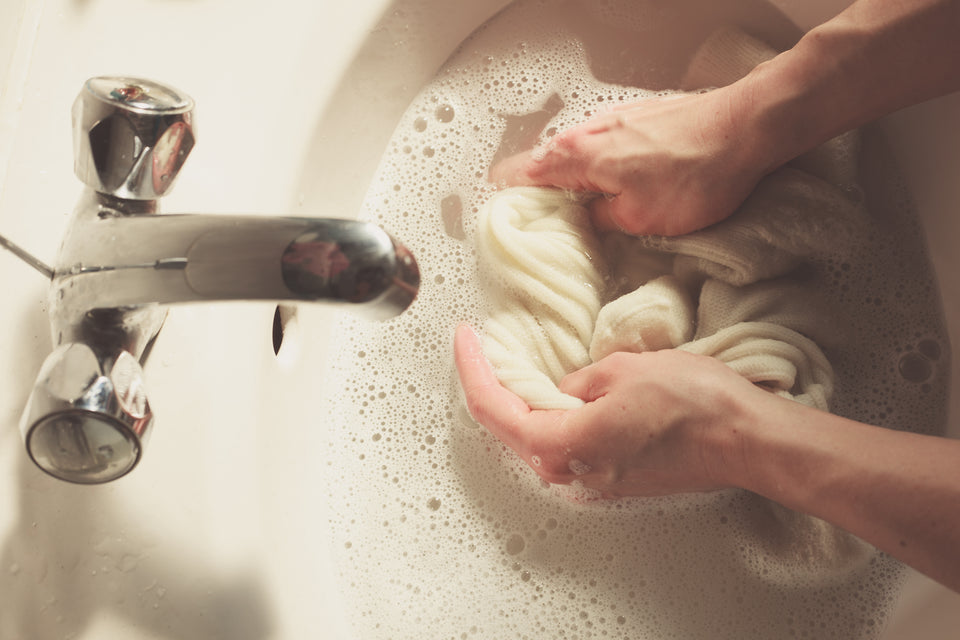
-
Protect Cashmere
Not everyone has room for a full cedar chest and its moth-repellent properties, but you can still enjoy the benefits of natural deterrents like these in other ways. Balls and blocks made of cedar are popular choices because they’re easy to tuck into corners and just need to be refreshed each season. Lavender also repels pests and has the added benefit of a pleasant smell.
As added protection, place acid-free tissue paper between folded layers to reduce any possibility of pressure damage while in storage. Your storage space should also be out of direct light and heat, so choose a closet with a solid door and one that isn’t under a vent.
-
Store Cashmere
Now it’s time to put your beloved cashmere sweaters and shawls away, but don’t put them on a bare shelf with nothing to protect them. No matter how safe you think your closet is, your cashmere is best stored in a breathable, zippered garment bag or cotton storage bags.
-
Rotate
Learning how to store cashmere properly is as much art as it is science, so you can experiment with when to air out your cashmere collection during long-term storage. In most cases, it isn’t necessary to air everything out on a monthly basis, but we do recommend airing all your pieces out at least every three months.
Once you understand how to store cashmere sweaters and other cashmere garments properly, each of these steps will transition seamlessly into your normal laundering routines.
If you maintain these good storage practices from season to season, you greatly improve the odds of securing that long-lasting lifespan that has given cashmere its fame and fortune throughout history. Even if it takes a season or two to master the process, it will be well worth it to keep your valued and treasured cashmere items in pristine condition.
To find in-depth information on washing and drying your cashmere items, check out our comprehensive guide on caring for cashmere.

